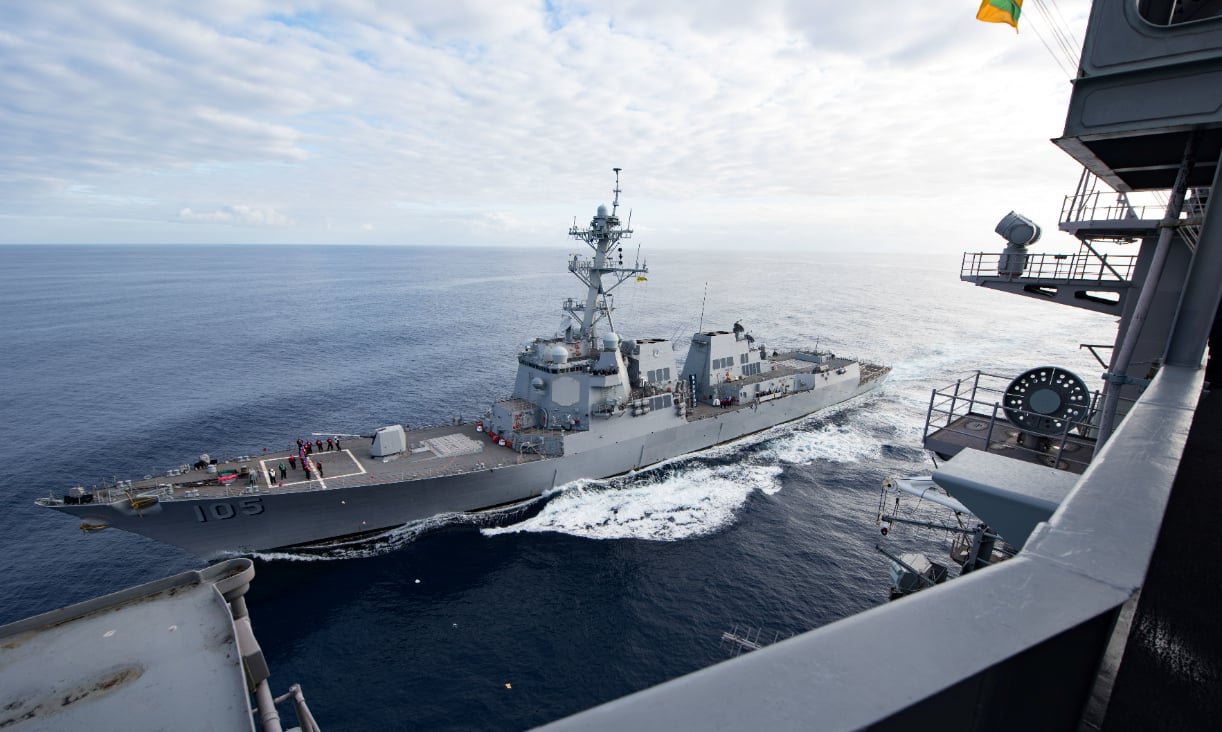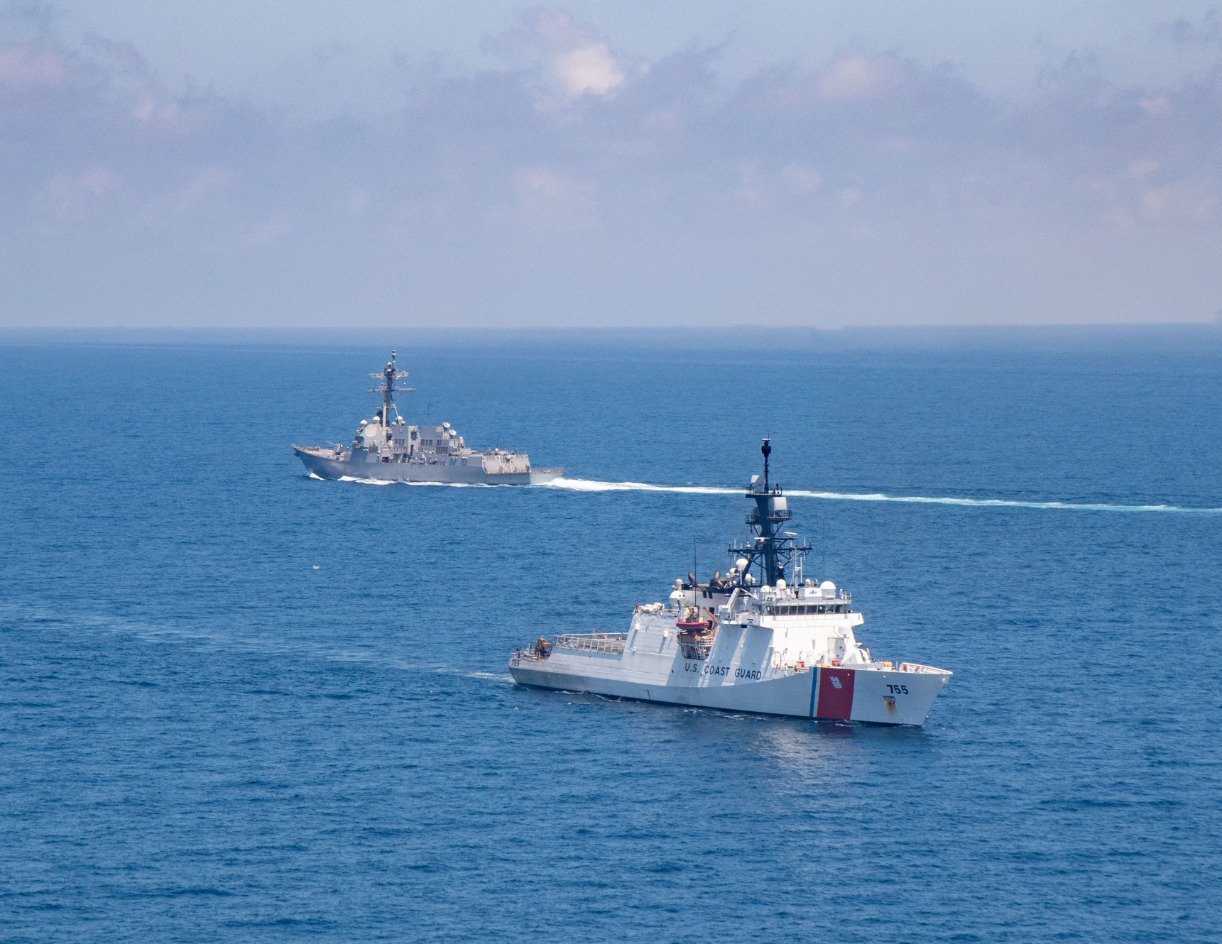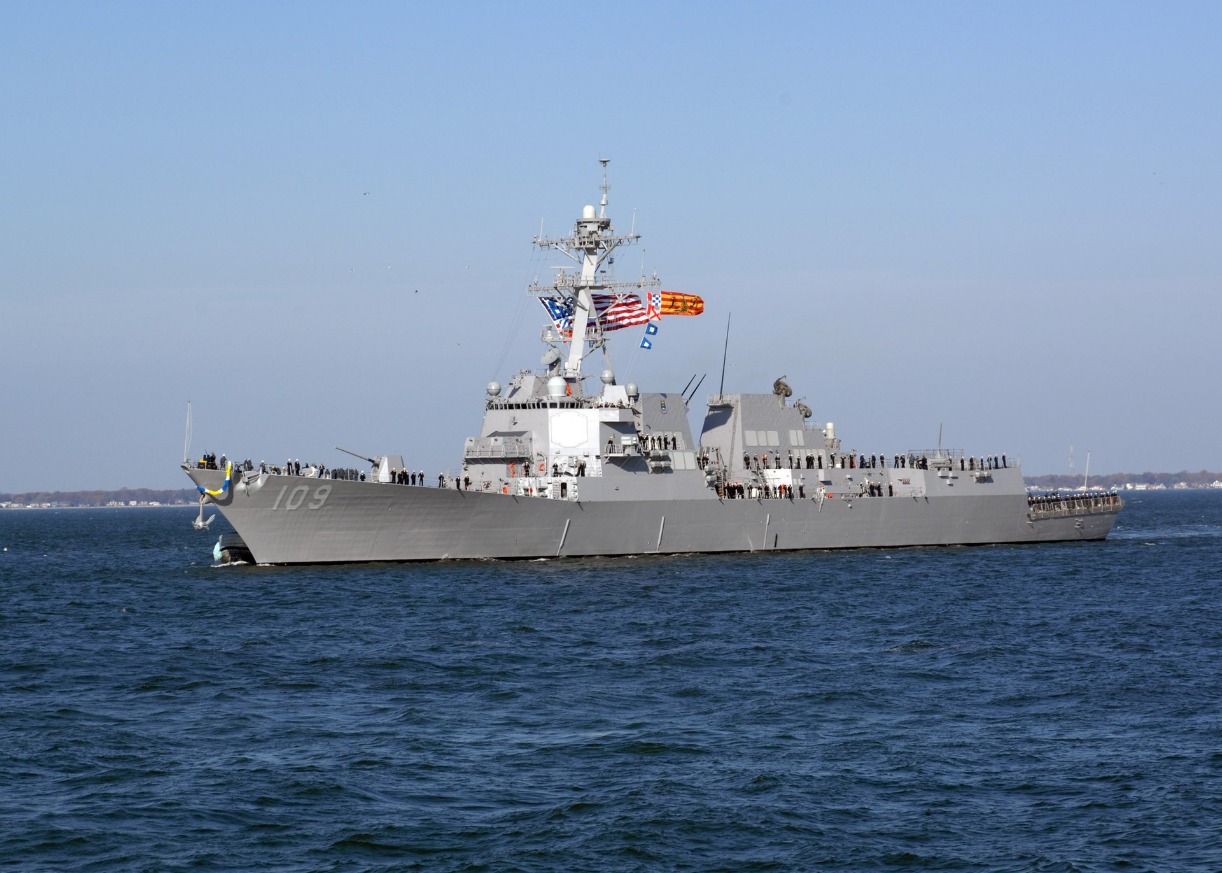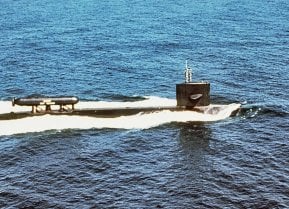Russia and China Freaked Out: Dozen U.S. Navy Arleigh Burke-Class Destroyers Get 'Extension'
On Halloween, Secretary of the Navy Carlos Del Toro announced that twelve aging Arleigh Burke-class Flight I destroyers will continue service beyond their 35-year life expectancy, adding 48 ship-years from 2028 to 2035.
What You Need to Know: On Halloween, Secretary of the Navy Carlos Del Toro announced that twelve aging Arleigh Burke-class Flight I destroyers will continue service beyond their 35-year life expectancy, adding 48 ship-years from 2028 to 2035.

-While cost-effective in maintaining fleet size, this extension comes with a $1.3 billion price tag in the short term and $6 billion over the next 15 years. The Navy’s decision underscores a strategic push to preserve capable assets amid budget constraints.
-This move follows recent decommissionings of Littoral Combat Ships and highlights the challenges in funding newer warships while relying on these seasoned, yet aging, vessels.
Navy Extends Life of Arleigh Burke-Class Destroyers Amid Budget Constraints
It wasn't meant to sound the least bit scary or ominous, but perhaps Secretary of the Navy Carlos Del Toro should have reviewed the calendar on Thursday. Announcing that the Department of the Navy plans to operate a dozen " Arleigh Burke-class (DDG-51) Flight I destroyers beyond their 35-year expected service life" sounds questionable at any time, but doing so on the day of spooks and horrors almost seems like a portent for the worst to happen.
"The decision, based upon a hull-by-hull evaluation of ship material condition, combat capability, technical feasibility and lifecycle maintenance requirements, will result in an additional 48 ship-years of cumulative ship service life in the 2028 to 2035 timeframe," the U.S. Navy said in a statement while confirming this is really about keeping up the size of the fleet.
In the past year, the sea service had reportedly "conducted a thorough evaluation of each DDG-15 Flight ship," and then determined that a dozen "should remain operational," despite the ship's reaching the end of their respective planned service life. The Navy added that the selection was also based on maximizing the service life before any of the warships will require additional "extensive and costly docking availability."
The U.S. Navy is looking to keep the aging warships in service and as cost-effectively as possible, Del Toro suggested.

"Extending these highly-capable, well-maintained destroyers will further bolster our numbers as new construction warships join the Fleet," said Secretary Del Toro. "It also speaks to their enduring role in projecting power globally, and most recently in the Red Sea, their proven ability to defend themselves, as well as our allies, partners and friends from missile and drone attacks."
Yet, keeping the aging ships, which have a 35-year service life, won't be free.
"We expect a total cost estimate of $1.3 billion across the FY26 FYDP and $6 billion over 15-years," a spokesperson for Navy Secretary Carlos Del Toro told USNI News. "On average, it will cost about $139.6 million per ship [per] year."
More Players On the Field
Chief of Naval Operations Adm. Lisa Franchetti's NAVPLAN had called for the sea service to "get more ready players on the field," and the aging destroyers are those players in this case – but it could be seen to be more about keeping old and tired players on the field instead.
"Today's budget constrained environment requires the Navy to make prioritized investments to keep more ready players on the field," said Adm. Franchetti. "The Navy is actively pulling the right levers to maintain and grow its Battle Force Inventory to support the United States's global interests in peace and to win decisively in conflict."

The following Arleigh Burke-class destroyers will remain in service:
USS Barry (DDG-52) USS The Sullivans (DDG-68) will see their service extended by three years; USS Gonzalez (DDG-66), USS Cole (DDG-67), USS John Paul Jones (DDG-53), USS Paul Hamilton (DDG-60), USS Curtis Wilbur (DDG-54), USS Laboon (DDG-58), USS John S. McCain (DDG-56) and USS Stout (DDG-55) will each receive five-year extensions; and USS Carney (DDG-64) and USS Stethem (DDG-63) will each receive one-year extensions.
Not noted in CNO or Secretary Del Toro is how the U.S. Navy has already begun to decommission its littoral combat ships (LCS), even as new models were produced. Along with the Zumwalt-class destroyer program, the LCS has been a hole in the water that the U.S. Navy has thrown taxpayer money into, and as the service is pinching pennies to pay for its next-generation warships, today's sailors will be forced to service on vessels that are getting long in the tooth.
Author Experience and Expertise: Peter Suciu
Peter Suciu is a Michigan-based writer. He has contributed to more than four dozen magazines, newspapers, and websites with over 3,200 published pieces over a twenty-year career in journalism. He regularly writes about military hardware, firearms history, cybersecurity, politics, and international affairs. Peter is also a Contributing Writer for Forbes and Clearance Jobs. You can follow him on Twitter: @PeterSuciu. You can email the author: [email protected].
Image Credit: Creative Commons and/or Shutterstock.


